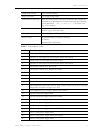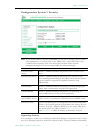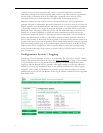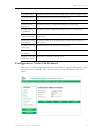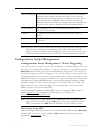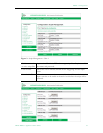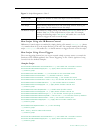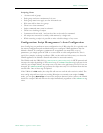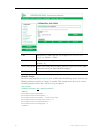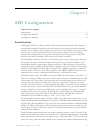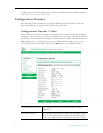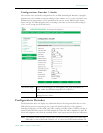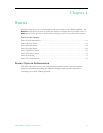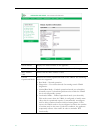
MPEG-2 Configuration
VBrick MPEG-2 Appliance Admin Guide 55
Scripting Notes
• * denotes end of group.
• Each group can have a maximum of six sets.
• Each group must have apply sets for all normal sets.
• Wait state will be alone in a group.
• There is no clear command.
• Script commands must start in column 1.
• There is no chaining of scripts.
• Comments will start with / and can be a line or the end of a command.
• All scripts are executed in a strictly serial manner by a single task.
• While executing a script it is possible to miss a double change of any event.
Configuration: Script Management > Auto Configuration
Auto Config lets you perform an auto-configuration via a URL script file. It is typically used
for remote configuration and troubleshooting or to configure VBrick appliances that are
behind a firewall. To configure a parameter on an appliance (or more likely a set of
parameters) you simply point the URL to a server with an .xml configuration file. This is
useful, for example, to change a reflector URL, set the audio and video rates, etc. when the
VBrick appliances are behind a firewall and cannot be accessed remotely.
The VBrick reads the URL field (e.g.
www.myserver.com/config.xml) via HTTP protocol and
executes the script depending on the EXECUTE tag. If a VBEXECUTEFORCE tag is present in the
.xml file (see example below), the script runs every time at the poll interval even if it has not
changed. If a
VBEXECUTEIFDIF tag is present the script runs only if it is different from the last
executed file. One of these tags is required.
If the VBrick is in
Edit mode, the script file will not run until the edit session is ended. The
auto config script will run before any waiting IR scripts or external event scripts. In
Edit
mode, you can press Run Script to execute the script on demand. After a reboot, the VBrick
checks for a script URL and will run the script immediately, regardless of the VBEXECUTE tag
value.



